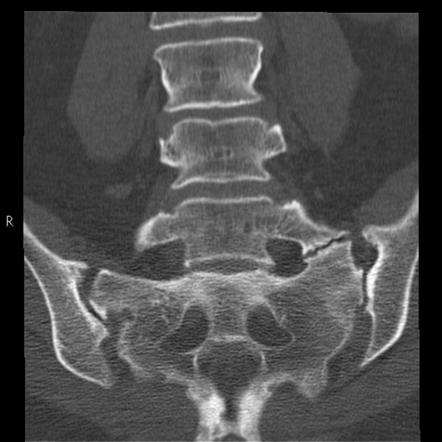Article reviewed and approved by Dr. Ibtissama Boukas, physician specializing in family medicine
I don't know about you, but personally I hate using drugs! I'm sure many of you share my philosophy. In any case, I understand my patients when they ask me if there are natural alternatives to medication to relieve their back pain. Many come to see me with various creams, ointments, grandmother's remedies or other, and wonder if it can cure their back pain.
In the following article, we will discuss the place of natural products often used in herbal medicine and homeopathy in the treatment of back pain. Are they really useful, or rather a way for charlatans to line their pockets? We will study the question from a scientific point of view, then pragmatically, before giving recommendations allowing you to make the best decisions afterwards.
Scientific method
Let me tell you straight away. Fervent defenders of science are not fans of natural products. Ask your doctor what he thinks of this or that natural product, and here is what you will probably get for an answer:
“There is not enough scientific evidence showing the beneficial effects of natural products, so it's a waste of time! »
Or:
"It's not proven by science, so it sucks!" »
Or this one (it may be your physiotherapist (physiotherapist) who tells you):
“There is nothing better than physical activity after back pain, so you should focus on your exercise program and forget about everything else! »
If you look at natural products from a scientific point of view, your doctor and therapist are probably right. On the one hand, there are very few studies establishing a relationship between natural products and favorable effects on low back pain. Then, several alternative products and treatments have not not been more effective than a placebo. Finally, when we study more closely the few studies that have looked at natural products (especially those that have shown encouraging results), we quickly realize that their methodology often leaves something to be desired.
The “problem” with science
When studying the effectiveness of a treatment from a critical point of view, we most often rely on published scientific studies. Admittedly, the evidence-based approach (EBP) also integrates the practitioner's experience and the patient's beliefs, but it places particular emphasis on scientific evidence and the latest clinical research. In the case of natural products, we mentioned above that the studies were either limited or of poor quality. Problematic, isn't it?
In this context, it is easy to understand why “scientists” often have a negative view (to be polite!) of natural products. These are also part of alternative medicine. Let's just take a moment to discuss the term “alternative”. Alternative to what, you say?
Alternative medicine was born in particular to overcome the limits of conventional medicine. Without wanting to get into a political debate, many accuse modern medicine of having become an institution that "dehumanizes" the patient by putting him in the background. Not to mention the race for profits in association with the pharmaceutical industries. Well, many will say that the accusation is exaggerated, even serious… But it still remains on the lips of many homeopaths, acupuncturists, or between energy specialists.
In short, I digress!
At least you will now understand why some doctors and scientists accuse alternative medicine of sometimes being fraudulent, irresponsible or even unethical.
Let's go back to our natural products and their role to play in back pain. Can a treatment be blamed for being understudied? And above all, is a lack of scientific proof an indication that the treatment in question is not at all effective? Your turn to judge…
Natural products on the market
Let's forget about the famous "modern medicine" vs "alternative medicine" debate for a moment. In this section, I will introduce you to some natural products available in the market. I warn you, this list is far from exhaustive! Moreover, if you write “Natural remedies against back pain” on Google, you will see that there is an almost infinite quantity of plants, poultices, tablets, or solutions proposed! Hard to choose, isn't it? Let's discuss those that come up most frequently, and that are often used in herbal medicine and homeopathy:
Glucosamine and chondroitin
Glucosamine and chondroitin are supplements often used for joint pain. Moreover, they are present naturally in the body, in the synovial fluid and the cartilage surrounding the joints. They are also used in the treatment of osteoarthritis-type knee pain, with encouraging scientific evidence. For back pain, on the other hand, the studies are limited and do not seem as encouraging. However, some doctors choose to prescribe these supplements to their patients with back pain.
Vitamin D
There is some evidence indicating a link between vitamin D deficiency and chronic pain. In a study, we could see a symptom improvement in people suffering from low back pain and who have used vitamin D supplementation. With this in mind, some doctors suggest regulating the level of vitamin D in patients suffering from chronic pain, and offering supplements to help them reduce their back pain.
Turmeric
This spice is mainly used in Indian curries, but is also recognized for its anti-inflammatory properties (the active compound of this product, curcumin, gives it its analgesic properties). It can be consumed in the form of herbal tea mixed with tea, or simply in capsule or liquid form.
capsaicin ointment
The famous Tiger Balm, you know? Don't worry, it contains no animal extracts, let alone tiger! This balm widely used in Asia contains several ingredients, the most common of which are camphor, capsaicin and menthol (this is what gives it its characteristic smell and warmth!). It is widely used for inflammatory, muscular and osteoarticular pain (and therefore regularly against back pain).
bryonia alba
Bryonia is prepared from the white bryony, a climbing herbaceous plant native to Europe and Central Asia. Like many homeopathic products, Bryonia is taken in granules, pills, liquids, oral powders or ointments.
Arnica
Arnica is a plant whose flowers are used to treat various pains. It contains an active ingredient, helenalin, which gives it its anti-inflammatory and analgesic properties. It is applied as a gel, cream or pill. Side effects, although rare, can include skin irritation and redness (mainly when applied topically).
Clay poultice
This is a fairly well-known grandmother's remedy. Here, clay is used for its so-called pain-relieving properties. Clay powder is mixed with water, creating a paste. This paste is then applied (sometimes previously heated in the oven) to the painful area, sometimes adding a pressure bandage.
white willow bark
The bark of the white willow, a tree reaching up to 25 m in height, is traditionally used in China for its medicinal properties. Because its bark contains salycilic acid, it is believed to work against pain, joint and arthritic problems, among others.
The problem with natural products
Have you ever seen an advertising poster mentioning something like:
“GUARANTEED cure for back pain (in addition to your flu, repeated UTIs, stomach issues, stress, and marital issues!)” -M. Unscrupulous-Seller
Or maybe you have already read a testimonial like:
"I tried this product, and my chronic lower back pain was completely gone in less than 3 days!" -Mrs. False Testimony(?)
Yes, this marketing strategy is unfortunately (too) often used to praise certain natural products for lower back pain. When we suffer from the back, we are often desperate, and even more so when our pain is chronic. It is therefore easy for a malicious seller to take advantage of the situation. This is how many "miracle" products are sold without scruples to people in search of hope on a regular basis. Let's not forget, you have to get these products first, and some turn out to be very expensive in the end.
No, natural products are not the miracle solution that can put an end to your back problems. On the contrary, some pseudo-remedies can even be dangerous for your health if they are used incorrectly. Let me explain: Despite being heavily diluted, some products, supplements, or extracts may still contain impurities. Moreover, since the increase in their popularity in recent years, we have observed a significant increase calls to the poison control centre.
An impure product can cause serious health problems, for example by damaging the liver. It can also interact with other medications and cause significant side effects. It is therefore CRUCIAL to inform your doctor of any natural product you are taking so that he can make the necessary adjustments if necessary.
My (humble) expert opinion
In all honesty, my opinion on the subject of natural products is mixed. I must tell you that as a physiotherapist (the equivalent of a physiotherapist in France), we are strongly focused on scientific evidence. Thus, considering the lack of evidence, it is difficult for me to recommend these products as a first-line treatment to my patients. On the other hand, I am well aware that there are limits to the purely “scientific” approach, and that empiricism also has its place in the treatment of low back pain. Then, you have to remember that not all natural products are promoted as THE solution to low back pain. As long as the marketing strategy to promote certain natural products is honest and well-founded, I personally don't see any disadvantages...
Here is what I suggest to people with back pain, and who consider natural products to reduce their pain:
- Ideally, we should prioritize scientifically proven solutions against back pain (exercise, stress management, quality of sleep, etc.).
- Tell your pharmacist and doctor about any natural product consumed.
- Ensure that the product consumed contains pure ingredients, and with an optimal dosage.
- Test such a product for 2 weeks, then reevaluate its impact on symptoms and quality of life (and not blindly consume a product indefinitely).
- Considering the lack of evidence, avoid natural products in certain “at risk” populations (pregnant women, breastfeeding, children, heavily medicated people)
Conclusion
The purpose of this article was not to position myself in favor or against natural products. On the contrary, I wanted to expose the situation to you by mentioning the positive and negative points of these remedies, and the way in which their use can be interpreted. And above all, to help you make informed decisions.
The truth (the real truth!) is that no one can guarantee that this or that natural product will be 100% effective for your back. And that, many health professionals will have difficulty admitting to you! After all, we have studied for many years, and are supposed to have the answer to everything! Not really…
Since the studies are not definitive, there are no guidelines yet surrounding the consumption of natural products. Unfortunately, it almost has to be done by trial and error. Of course, you can ask for help from a professional if necessary (homeopath, naturopath, etc.). But the most important thing is that you observe favorable results after a reasonable time. If it works for you, and it's done in a safe environment, why not continue? On the other hand, if you do not see any improvement after a while, do not insist on continuing, and look for other alternatives.
Let's end with THE most important point. And here, I dare to hope that all therapists and health professionals will agree with me. Good back health is a process, and cannot be reduced solely to the use of a particular product, remedy or technique. Pain affects several spheres of life, and must therefore be treated by integrating the physical, psychological, social, etc. aspect.
And for now, to my knowledge, there is no cream, pill or ointment that can treat all these aspects at the same time!
My name is Anas Boukas and I am a physiotherapist. My mission ? Helping people who are suffering before their pain worsens and becomes chronic. I am also of the opinion that an educated patient greatly increases their chances of recovery. This is why I created Healthforall Group, a network of medical sites, in association with several health professionals.
My journey:
Bachelor's and Master's degrees at the University of Montreal , Physiotherapist for CBI Health,
Physiotherapist for The International Physiotherapy Center








